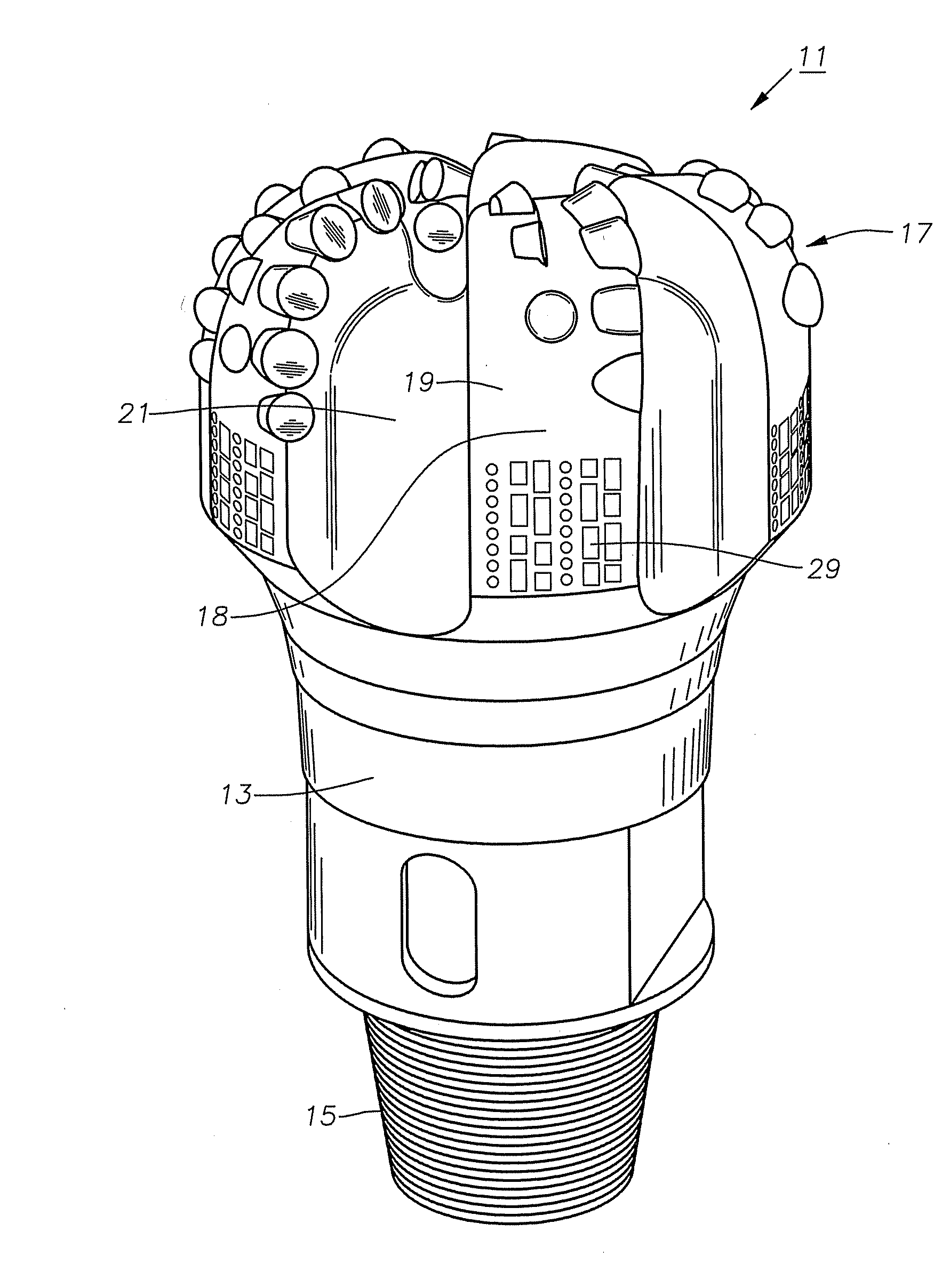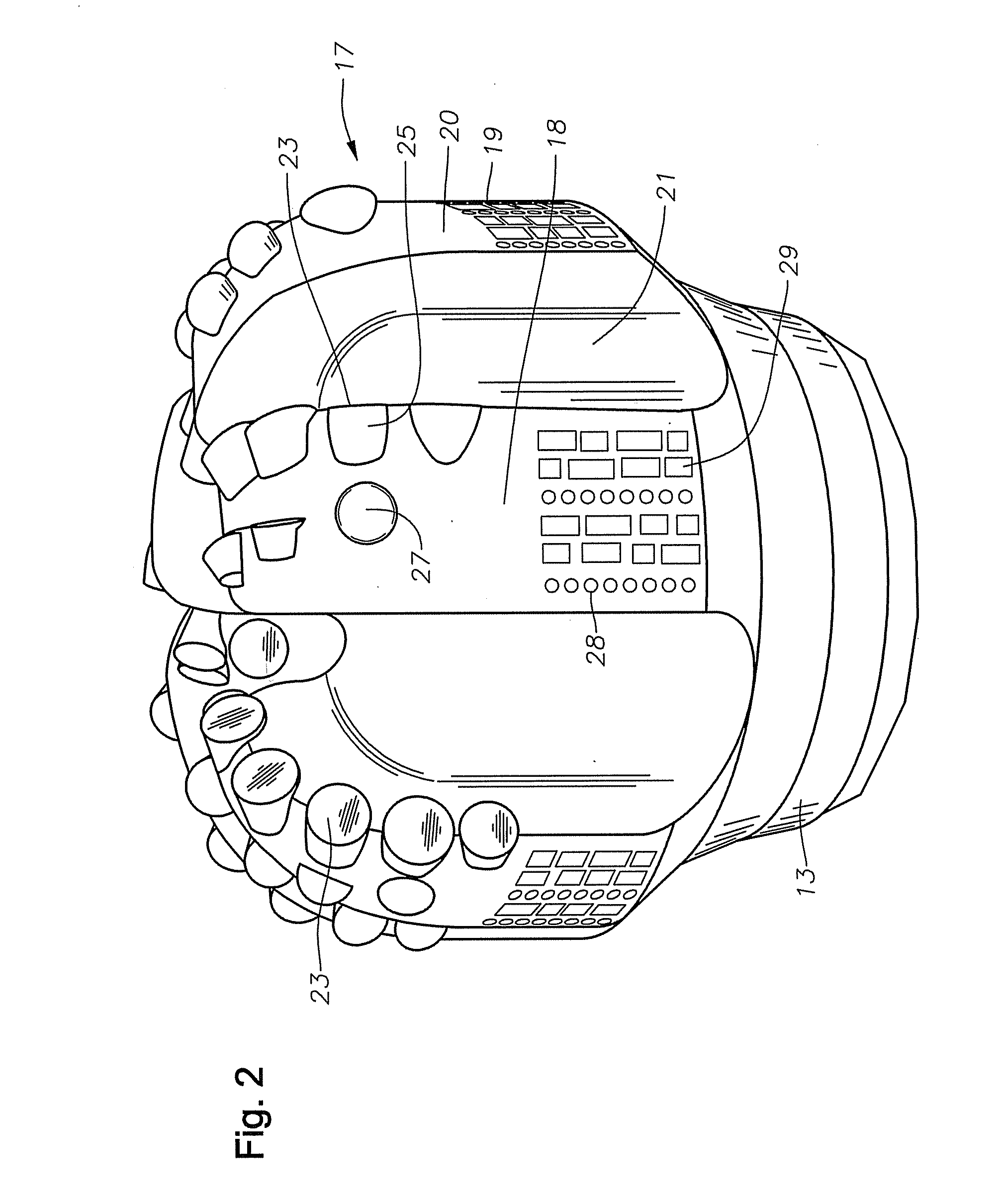Method of Repairing Diamond Rock Bit
a diamond rock and matrix body technology, applied in the field of diamond earthboring bits, can solve the problems of diamond bit abrasive elements that are the matrix material binder of the hardfacing process is excessively melted, and the diamond bit is not typically used in hardfacing
- Summary
- Abstract
- Description
- Claims
- Application Information
AI Technical Summary
Benefits of technology
Problems solved by technology
Method used
Image
Examples
Embodiment Construction
[0020]Referring to FIGS. 1 and 2, bit 11 is an earth-boring bit having a shank 13, normally formed of steel. Shank 13 has a threaded stem 15 on its end for securing to the drill string. A crown 17 is formed on the end of shank 13 opposite stem 15. Crown 17 is typically formed of a tungsten carbide matrix material 18.
[0021]Crown 17 has a plurality of blades 19 formed thereon. Blades 19 are preferably integrally formed with crown 17 and extend over and down the sides of crown 17, forming a gage surface 20. Gage surface 20 is an area located at the maximum diameter of each blade 19 and determines the diameter of the borehole being drilled. Junk slots 21 extend between each blade 19. One or more nozzles (not shown) are located on the bottom of crown 17 between blades 19 for discharging drilling fluid. The drilling fluid, along with cuttings, flows through junk slots 21 and back up the annulus surrounding the drill string.
[0022]A number of polycrystalline diamond cutters (PDC) 23 are mou...
PUM
| Property | Measurement | Unit |
|---|---|---|
| temperature | aaaaa | aaaaa |
| temperature | aaaaa | aaaaa |
| melting temperature | aaaaa | aaaaa |
Abstract
Description
Claims
Application Information
 Login to View More
Login to View More - R&D
- Intellectual Property
- Life Sciences
- Materials
- Tech Scout
- Unparalleled Data Quality
- Higher Quality Content
- 60% Fewer Hallucinations
Browse by: Latest US Patents, China's latest patents, Technical Efficacy Thesaurus, Application Domain, Technology Topic, Popular Technical Reports.
© 2025 PatSnap. All rights reserved.Legal|Privacy policy|Modern Slavery Act Transparency Statement|Sitemap|About US| Contact US: help@patsnap.com



